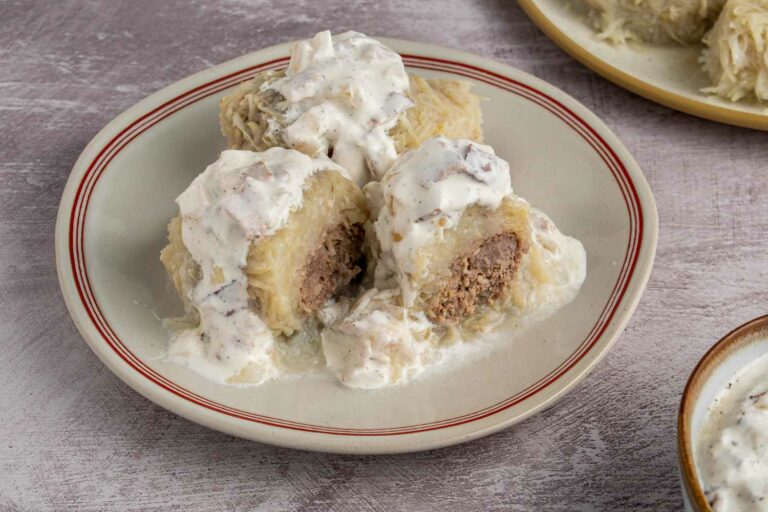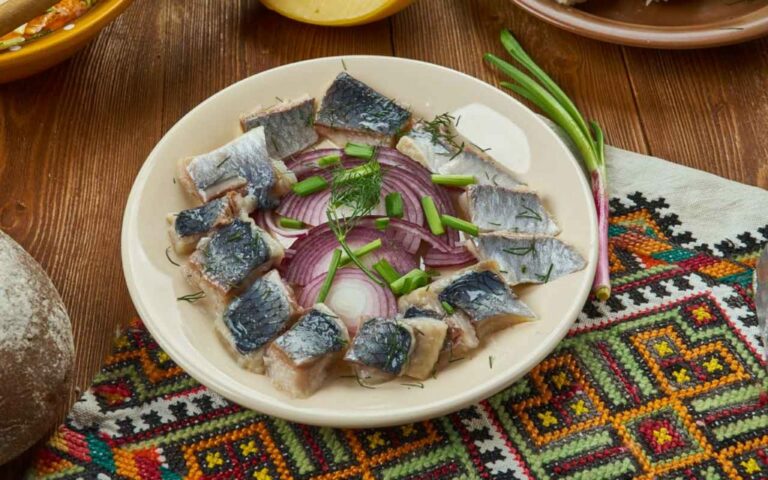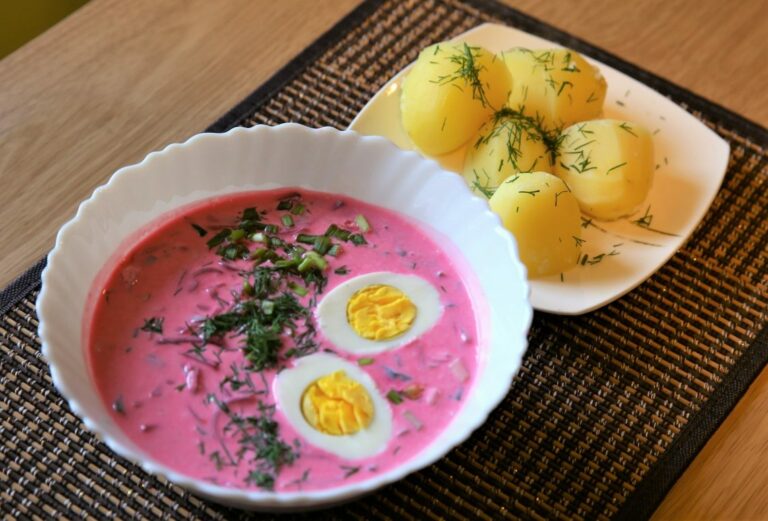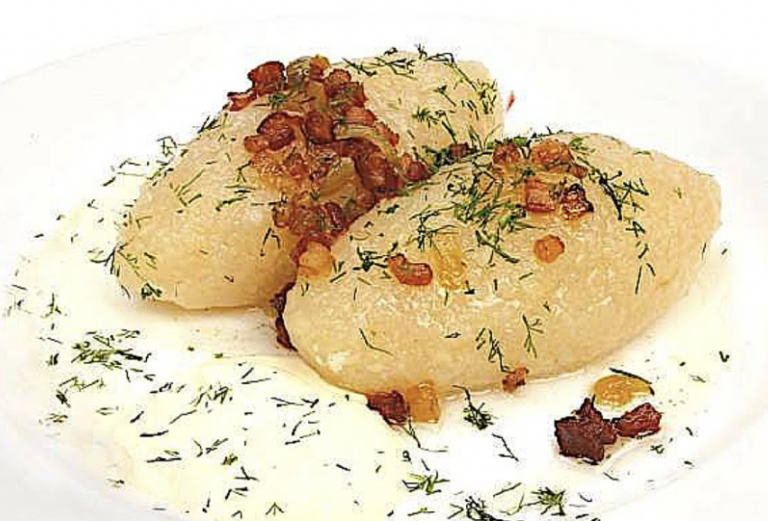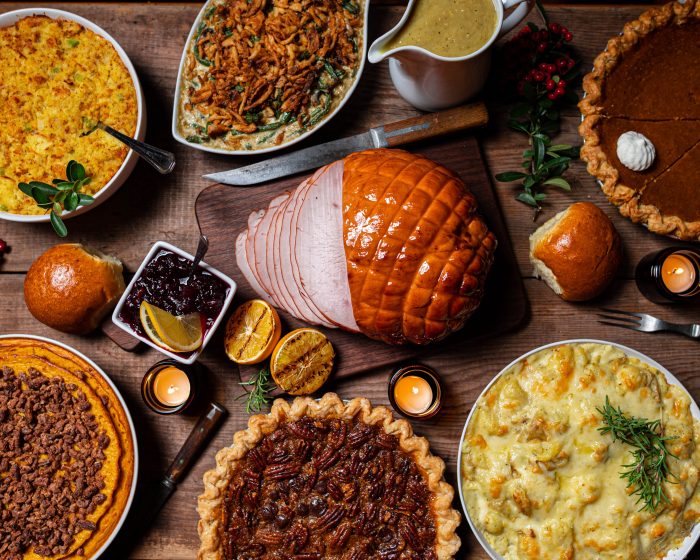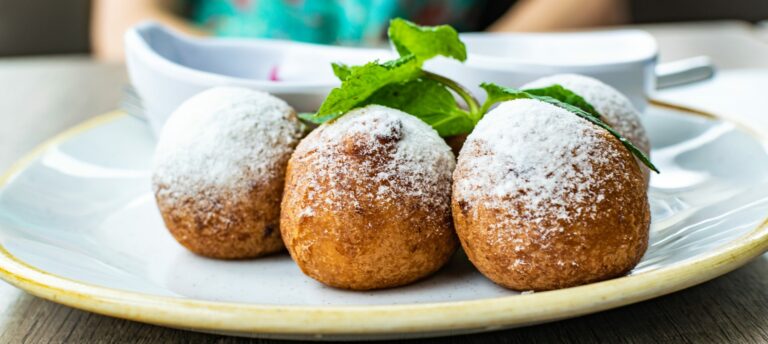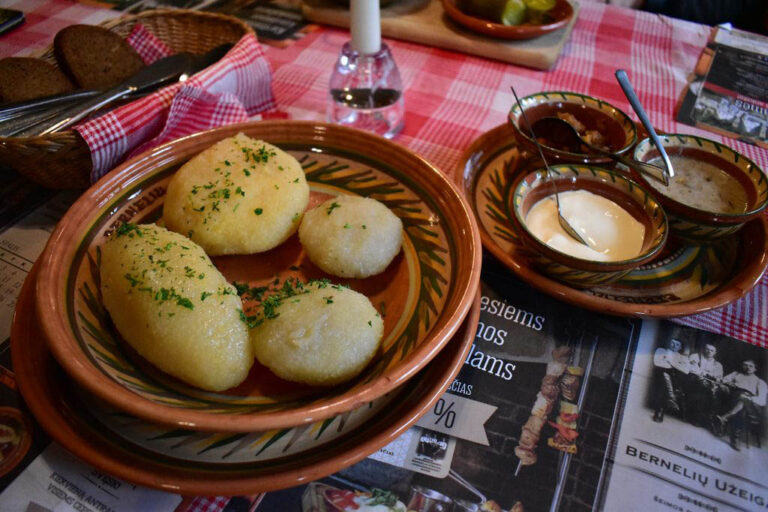Introduction to Lithuanian cuisine
Lithuanian cuisine is known for its hearty and simple dishes that reflect the country’s agricultural heritage. The cuisine largely relies on local ingredients, including potatoes, dairy products, meats, and grains. The dishes are often heavy, but flavorful, and are perfect for the cold climate of the country. Lithuanian cuisine is also heavily influenced by neighboring countries, particularly Russia, Poland, and Germany.
Traditional Lithuanian snacks and appetizers
Snacking is an important part of Lithuanian cuisine, and there are several traditional snacks and appetizers that are popular in the country. These snacks are often served before a meal or as a light meal on their own. They are typically made with simple ingredients but are full of flavor. Here are some of the most popular Lithuanian snacks and appetizers:
Cepelinai: Lithuanian potato dumplings
Cepelinai, also known as Zeppelins, are one of the most famous and beloved Lithuanian dishes. These potato dumplings are shaped like zeppelins, hence their name. They are made with grated potatoes, ground meat, and onions and are boiled until they are cooked through. They are often served with sour cream, bacon, and sometimes even a tomato sauce. Cepelinai are a staple of Lithuanian cuisine and are perfect for a hearty snack or a meal.
Kibinai: Savory pastries with meat filling
Kibinai are savory pastries that are filled with spiced meat, onions, and sometimes vegetables. They are a popular snack in Lithuania and are often sold in markets and street stalls. The pastry is made with a yeast dough and is baked until it is golden brown. Kibinai are perfect for a quick snack or a light meal on the go.
Kastinys: Butter and sour cream spread
Kastinys is a simple Lithuanian spread made with butter and sour cream. It is often served with bread or boiled potatoes and is a staple of Lithuanian cuisine. The butter and sour cream are mixed together until they are smooth and creamy, and sometimes herbs are added for extra flavor. Kastinys can be enjoyed as a snack or as a side dish with a meal.
Šaltibarščiai: Cold beet soup with sour cream and dill
Šaltibarščiai is a cold beet soup that is often served as an appetizer in Lithuania. The soup is made with beets, potatoes, cucumbers, and sour cream and is served cold with dill and sometimes boiled eggs. It is a refreshing and flavorful dish that is perfect for hot summer days. Šaltibarščiai is a popular traditional dish in Lithuania, and it is often enjoyed as a light meal or as a starter before a main course.

